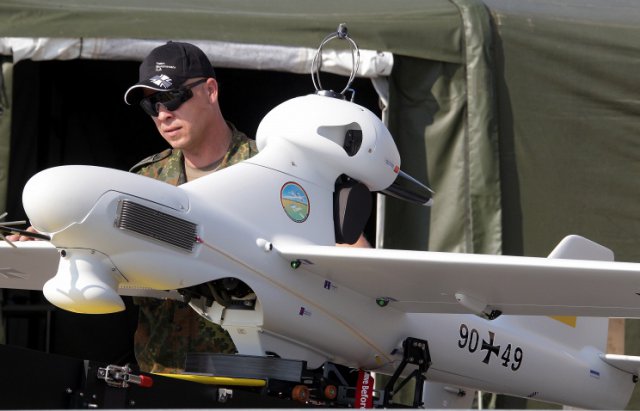Germany’s Luna UAS cannot fly in Ukraine during the winter period for technical reasons, so the Organization for Security and Cooperation in Europe (OSCE) monitors will not be able to use them, the Bild newspaper said on Friday.
Drones of this type can operate only at air temperatures higher 19 degrees Celsius below zero, and winter temperatures in Ukraine at the drone flight altitude of 3,000 to 5,000 metres are considerably below this mark. “If a done freezes, it crashes,” the newspaper quotes Henning Otte, a defense expert of the Christian Democratic Union.
On October 10, German Foreign Minister Frank-Walter Steinmeier said Germany notified the OSCE it was ready to send drones and military escort to Ukraine. Steinmeier said that an “armed escort” for the teams operating the unmanned aircraft would be required if the mission were to go ahead, saying both Berlin and Paris had made this clear when suggesting the deployment to the OSCE.
Two weeks ago, Ukrainian President Petro Poroshenko allowed the OSCE monitors to use drones in the east of the country.
Poroshenko and OSCE Chairperson-in-Office Didier Burkhalter also agreed to increase the number of monitors and provide them with better technical means for monitoring and verification.
The OSCE Secretariat earlier said that the drones would be used to monitor the Ukrainian-Russian border and in compliance with the ceasefire agreement reached in Minsk on September 5.
The sides agreed that the drones will be supplied by the Austrian company Schiebel. It will provide two S-100 vertical take-off and landing drone systems, a control station, six operators, and three mechanics.

